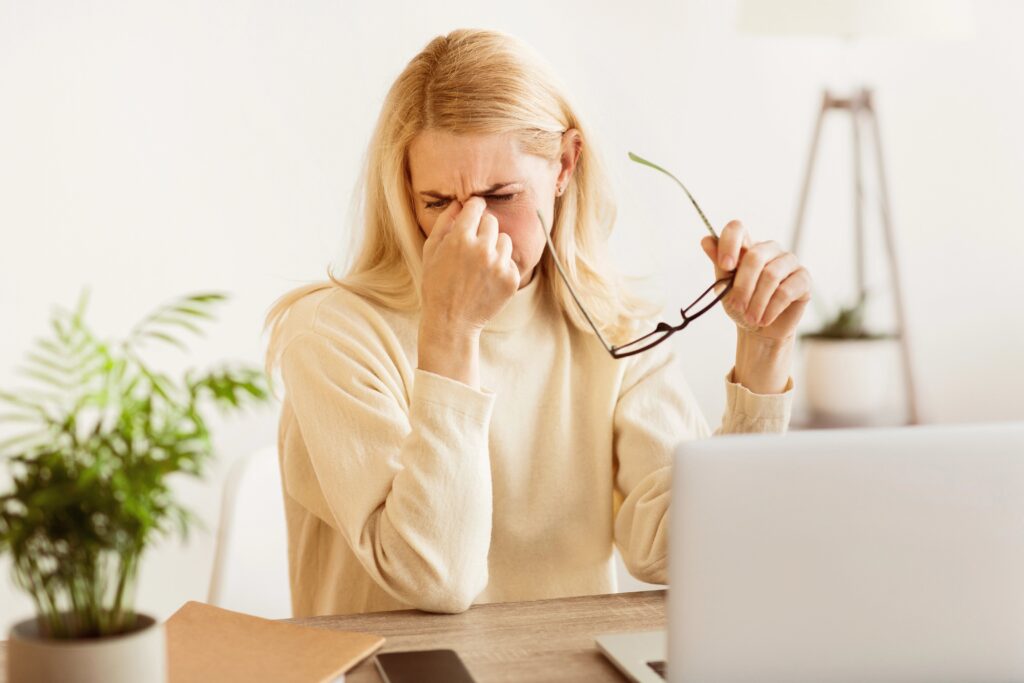Maybe you’ve heard of the 50/30/20 rule, a budgeting method that advocates allocating 50% of your after-tax income to “needs,” 30% to “wants,” and 20% to savings and debt repayment. Perhaps you’re familiar with the 80/20 rule, also known as the Pareto Principle, which states that 20% of causes result in 80% of effects. But how about the 20-20-20 rule? If you don’t already know how to follow this rule and what it’s meant to accomplish, today is the day to change that. After all, if you’re like most people today, you probably spend a little too much time staring at screens . . . Am I right? If so, read on to learn about the 20-20-20 rule and how it works to prevent eye strain.

What Is the 20-20-20 Rule?
The 20-20-20 rule is a tool recommended by eye care professionals to prevent digital eye strain. It’s very simple, and the repeating 20s make it easy to remember:
- Every 20 minutes . . .
- Look at something 20 feet away . . .
- For 20 seconds.
Who knew that 20-second breaks could be so helpful? This technique is recommended by all the big names in eye health, including the American Optometric Association (AOA) and the American Academy of Ophthalmology (AAO). It’s effective because it gives the eye muscles a chance to relax, preventing the fatigue, dryness, blurry vision, and headaches that often accompany prolonged focus on near objects.
More Tips to Reduce Eye Strain
While the 20-20-20 rule provides a great starting point, it’s just one technique you can use to reduce or prevent persistent eye strain. Try the following ideas as well:
- Schedule an eye exam. Sometimes eye strain is due to uncorrected vision problems. If you haven’t visited your eye doctor in a year or more, schedule an eye exam so that a professional can check your vision and eye health. You might find that you have fewer headaches and tired, sore eyes if you wear glasses or contacts with the proper prescription.
- Adjust your lighting. When watching TV, it helps to keep the room softly lit. When reading or doing close work (embroidery, cake decorating, fine-detail carpentry, etc.), try to position a light source so that the task is lit directly. Avoid shining light directly into your eyes.
- Change your screen settings. Larger text can make a huge difference if you often find yourself squinting. You can also try adjusting the screen’s contrast and brightness to a level that feels more comfortable.
- Blink often. People tend to blink far less often when staring at a screen. Most of us blink 14 to 17 times per minute, but that number drops to 5 times a minute when we’re looking at a screen. Blinking helps keep your eyes hydrated, so if you notice yourself staring intensely or zoning out, try to increase your blink rate.
- Take frequent breaks. If you often find yourself getting sucked down rabbit holes and then reemerging hours later, try to be more mindful about taking breaks. You might find it helpful to set timers.
- Limit screen time. Easier said than done, right? But reducing the amount of time you spend staring at screens can have numerous positive effects — from better sleep and lower stress to enhanced posture and more physical activity — so it might be worthwhile to try a major overhaul if you sometimes feel like your laptop and phone control your life.
_____
Do you suffer from eye strain or dry eyes? If you live in southwest Missouri, stop by Heffington’s. Since 1975, the Heffington family has assisted the Springfield community with top-quality eye care and affordable eyeglasses and contacts. To learn more about our products and services, please get in touch with us online, send an e-mail to asktheexperts@heffingtons.com, or give us a call at 417-869-3937 (Optiland location) or 417-882-3937 (House of Vision location).
